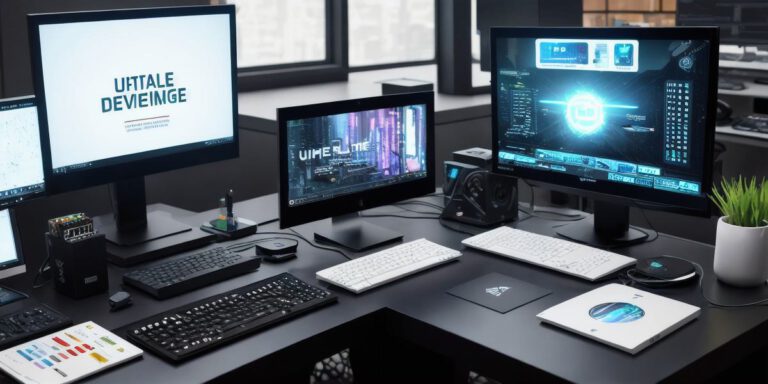Unleash the Power of Real-Time Ray Tracing with Unreal Engine 4 and RTX

Introduction:
Real-time ray tracing is a technique that has been around for decades, but it’s only recently that it has become widely adopted in game development. With the release of Unreal Engine 4 (UE4) and NVIDIA’s Ray Tracing Technology (RTX), real-time ray tracing has become more accessible than ever before. In this article, we will explore the benefits of using real-time ray tracing with UE4 and RTX and show you how to implement it in your games.
Benefits of Real-Time Ray Tracing:
One of the main benefits of real-time ray tracing is that it allows for more realistic lighting and reflections in real time. This is because ray tracing simulates the behavior of light as it bounces off objects, creating a much more accurate representation of how light behaves in the real world. Real-time ray tracing also allows for better global illumination, which is the process of simulating indirect lighting from sources that are not directly visible. This can lead to more natural and realistic lighting in your games.
Real-time ray tracing also has performance benefits. Because it is a technique that is specifically designed for real-time rendering, it is often faster than traditional methods of creating complex lighting effects. This can be especially useful in large open worlds where lighting effects are crucial to the overall look and feel of the game.
Implementing Real-Time Ray Tracing with UE4 and RTX:
To implement real-time ray tracing with UE4 and RTX, you will need to use a combination of UE4’s built-in ray tracing features and NVIDIA’s RTX technology. First, you will need to make sure that your system meets the hardware requirements for running RTX. This typically means having an NVIDIA GPU that supports RTX and enough RAM to run the game at high settings.
Next, you will need to set up your project in UE4 to use ray tracing. This involves enabling the ray tracing feature in the project settings and configuring the ray tracing settings to suit your needs. You will also need to create any necessary materials that will be used by the ray tracer.
Once you have everything set up, you can start experimenting with different lighting effects and reflections. UE4’s built-in ray tracing features make it easy to create complex lighting effects, such as shadows and reflections, in real time. You can also use RTX’s advanced ray tracing capabilities to create even more realistic lighting effects.
Real-Life Examples:
One of the best examples of real-time ray tracing in action is NVIDIA’s "Half-Life 2: The Lab." This game was created specifically to showcase the capabilities of RTX and it features some of the most impressive ray tracing effects ever seen in a game. You can also check out the demo for "Metro Exodus," which uses real-time ray tracing to create stunning lighting effects in the game’s dark, atmospheric environments.
Summary:
Real-time ray tracing is a powerful tool that can be used to create some of the most realistic and impressive lighting effects ever seen in games. With UE4 and RTX, real-time ray tracing has become more accessible than ever before, allowing game developers to create stunning visuals with ease. Whether you’re looking to add more depth and realism to your open world games or simply want to create more realistic lighting effects in your action-packed games, real-time ray tracing is definitely worth considering.








